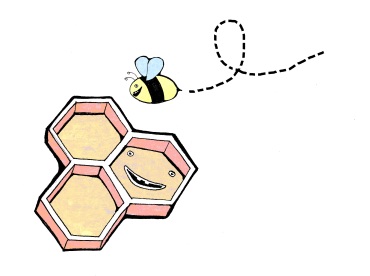Picture Credit: Kenneth Lehtinen
Question: “How do bees make honey?” – from a 5 year old in British Columbia
Answer: For an in-depth look at how honey bees make honey, we turned to the great resources of Buzz About Bees, the Ontario Bee Keepers Association and the Canadian Honey Council.
As many of you know, bees play an exceptionally important role in the on-going health of our everyday food production. According to the Canadian Honey Council “honey bees pollinate about a third of Canadian food crops and also contribute substantially to Canada’s agricultural sector as producers of honey and other hive products such as beeswax and bee pollen”. In addition to their ability to produce honey, bees are essential for the production of many fruits and vegetables. The Canadian Honey Council explains that “without honey bee pollination, we would have very few blueberries, apples, raspberries, cranberries, tomatoes, peppers, kiwis, pumpkins, squashes, strawberries, almonds and blackberries.”
In Canada alone, more than 500,000 (that’s a lot!) honey bee colonies, each with over 60,000 bees, are tended by almost 6,000 bee keepers: there are about 30 billion honey bees in Canada – that’s almost 1,000 honey bees per Canadian!
The team at Buzz About Bees explains the how bees make honey.
“Honey production starts with foraging worker bees – and flowers, of course. As the weather begins to warm up, the bees will begin collecting nectar from flowers within a radius of around 4 miles. The male honey bees (drones), do not forage for the hive, and nor does the queen honey bee. The bees have glands which secrete an enzyme. When the bees collect the nectar, it is then mixed with the enzyme in the bee’s mouth. The nectar is then taken back to the bee hive or nest, where it is dropped into the honeycomb. These are hexagonal shaped cells, which in the wild, the bees make themselves out of wax. Once the nectar solution has become more concentrated, at this point, the bees will cap the cells. This is when beekeepers know the honey is ready to be harvested!”
For a great resource that further explains the process of how bees make honey, see the amazing video by a very talented artist Ashley v. Feeney below.
For those of you interested in learning more about bees, beekeeping or other honey related matters, click on the great resources below.
Canadian Honey Council – http://www.honeycouncil.ca/index.php
Buzz About Bees – http://www.buzzaboutbees.net/
Ontario Bee Keepers Association – http://www.ontariobee.com/

